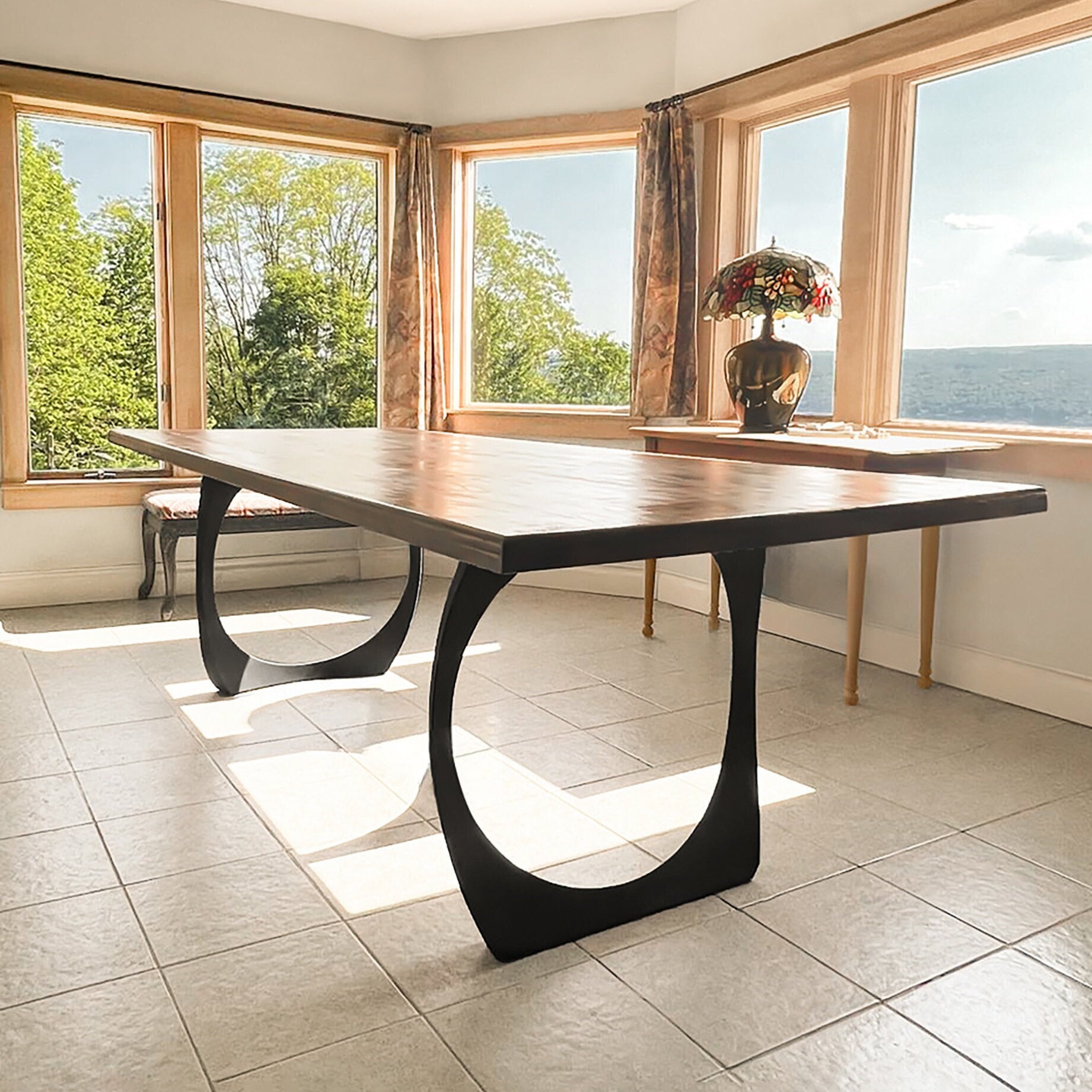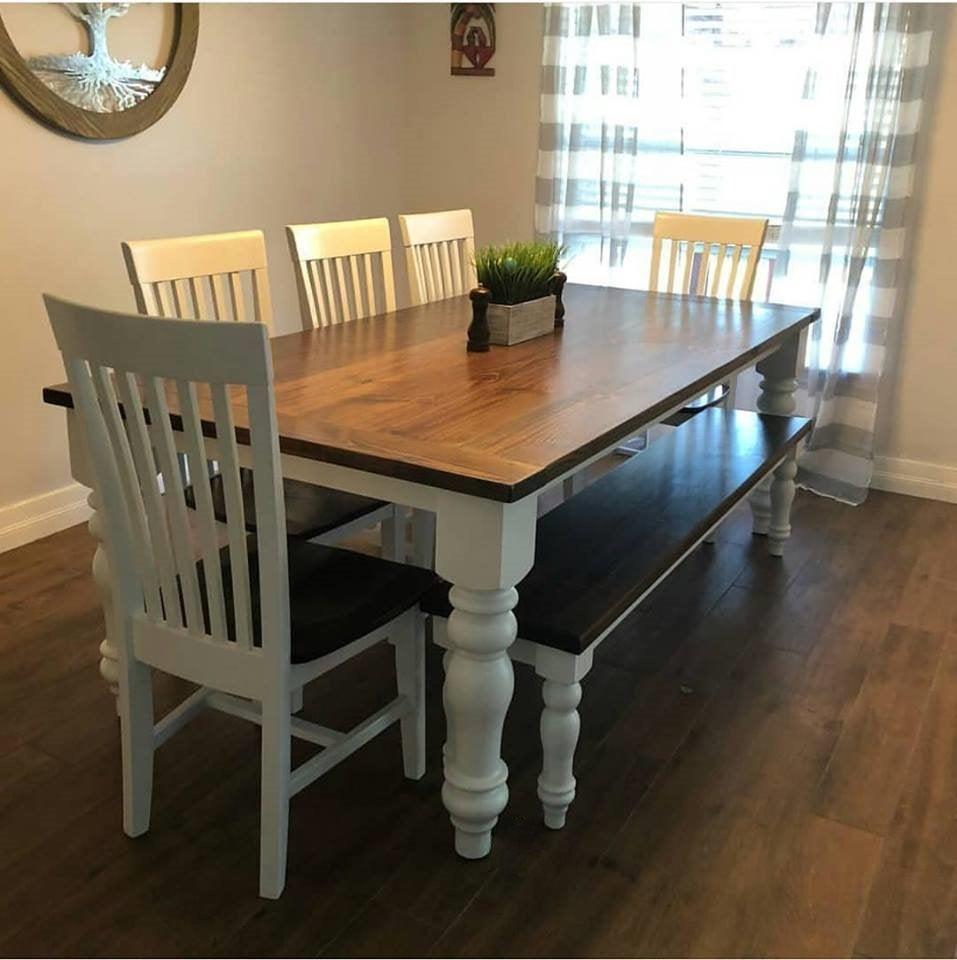Unique Dining Room Table Legs to Transform Your Eating Area
Unique Dining Room Table Legs to Transform Your Eating Area
Blog Article
Selecting the Perfect Table: What Styles Job Best for Your Home?
Picking the perfect dining table for your home can be a nuanced procedure that stabilizes visual appeals and performance. To browse these choices efficiently and discover a table that absolutely enhances your home, consider the complying with elements in information.
Analyzing Your Space
Evaluating the dimensions and design of your dining location is a critical first step in selecting the ideal eating table. Begin by determining the size and size of the area, making up entrances, home windows, and various other architectural attributes that can influence table positioning. This ensures that your table not only fits however likewise permits comfortable motion around it.
Think about the number of people you usually amuse. A table ought to fit your home's everyday needs while providing sufficient flexibility for periodic visitors. Generally of thumb, allot at the very least 24 inches of table width per person to ensure a comfortable eating experience.
It's additionally important to preserve suitable clearance around the table. Ideally, there should go to least 36 inches between the table side and wall surfaces or other furniture, enabling very easy accessibility and motion. For spaces where chairs with arms or added storage space units like buffets are involved, raising this clearance to 48 inches is a good idea.
Illumination and atmosphere play substantial functions as well. Guarantee that your dining table straightens with existing lighting components or prepare for adequate lights services. This comprehensive spatial evaluation guarantees that your eating table not only fits literally but additionally harmonizes with your area's overall capability and aesthetic.
Popular Table Styles

Conventional dining tables frequently feature ornate information, bent legs, and abundant wood finishes, stimulating a feeling of ageless sophistication. They are ideal for homes with classic decor or those aiming to include a touch of class to their dining area.
Modern eating tables prioritize simplicity and tidy lines, commonly integrating materials like glass and steel. These tables are excellent for modern spaces, providing a streamlined and clean look that matches minimalist layout approaches.
Rustic table, on the various other hand, emphasize all-natural products and a handcrafted appearance - dining room table legs. They commonly include redeemed timber and a troubled surface, creating a cozy and inviting ambience. These tables work well in farmhouse-style homes or those looking for a relaxing, organic feeling
Industrial dining tables incorporate raw materials such as steel and wood, often showcasing a practical aesthetic. This design is well-suited for loft spaces or urban areas, including a touch of tough beauty and toughness to the dining experience.
Each design offers unique benefits, making it important to pick one that lines up with your home's total design and your individual choices.
Material Options
When selecting a table, the selection of material plays a vital role in figuring out both the table's aesthetics and performance. Timber, metal, my response glass, and composite materials each deal one-of-a-kind benefits and difficulties, making it essential to line up the product with your home's decor and way of life requirements.
Timber is a timeless and versatile choice, readily available in varieties such as oak, walnut, and mahogany. Known for its toughness and heat, timber complements both conventional and contemporary insides. Nonetheless, it calls for regular maintenance to avoid scrapes and bending.
Metal tables, commonly crafted from stainless-steel, light weight aluminum, or functioned iron, are commended for their modern-day appeal and robustness. They are particularly suited for industrial or minimalist settings but can be prone to damages and might really feel cool to the touch.
Glass eating tables bring an air of style and visibility, perfect for smaller sized rooms as they produce an impression of more room. While easy to clean, glass can be susceptible to spots and calls for mindful taking care of to stay clear of chips and fractures.
Composite products, such as MDF and plywood, offer affordable and customizable solutions, though they might do not have the durability of natural materials. Picking the appropriate product ensures your dining table is both a functional property and an aesthetic delight.
Sizes And Shape Factors To Consider
After figuring out the proper material for your dining table, the next factor to consider is selecting the right shape and size to suit your room. The shape of the table considerably influences the area's aesthetic and functionality. Rectangle-shaped tables, the most common form, are optimal for larger rooms and can fit a higher variety of guests. They additionally permit a more official dining experience. Alternatively, round tables foster a feeling of intimacy and are superb for smaller sized dining locations, encouraging discussion by eliminating edges and making everyone really feel equally consisted of.
As a rule of thumb, assign at least 24 inches of table width per person to ensure comfortable dining. Furthermore, think about the table's clearance area: there must be at least 36 inches between the table edge and the walls or various other furnishings. Expanding tables supply adaptability if you often hold larger gatherings, providing added seats when required without inhabiting additional area daily.
Matching Your Style
Choosing a table that harmonizes with your existing style is essential in creating site web a natural and welcoming space. Begin by analyzing your present indoor design style, whether it be modern, standard, rustic, or eclectic. The eating table ought to complement the general aesthetic, not complete with it. A smooth, minimalist table with clean lines is ideal for a contemporary home, while a vintage, ornate table fits a more standard setup.
If your decor features warm tones and natural materials, think about a wood table to boost the natural feeling. Alternatively, a glass or steel table might be more appropriate in a space dominated by amazing colors and industrial aspects.
A rough-hewn, recovered wood table can include personality to a rustic space, while a polished marble surface area can raise an extravagant dining area. A well-matched eating table not only enhances aesthetic charm yet likewise enriches the total top article eating experience.

Final Thought
Selecting the ideal dining table necessitates careful factor to consider of room, design, products, form, and dimension. Conventional tables enhance classic interiors with abundant timber coatings, while contemporary tables match contemporary settings via glass and metal.
Report this page